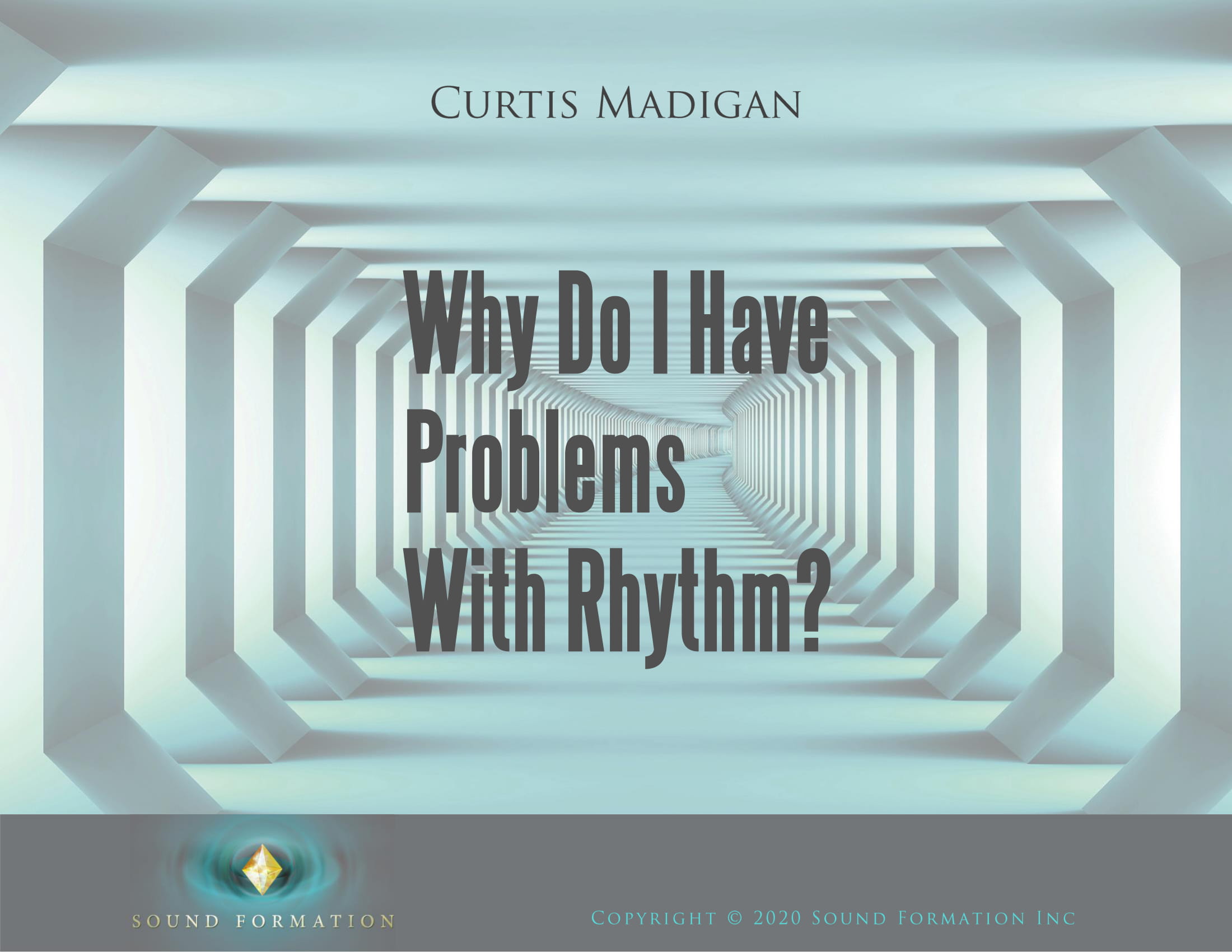The Sound Formation Method™ developed by Curtis Madigan, contains the first comprehensive theory of rhythm. This theory of rhythm was meticulously crafted with Madigan’s brand new ideas that drastically change how rhythm is being conceptualized, visualized, heard, and practiced. This comprehensive theory of rhythm is akin to learning harmony, scales, motifs, intervals, voicings, counterpoint, etc., except rhythmically with as many hierarchies, relationships, and concise definitions.
Professional musicians that are already at a very high level along with aspiring students, are studying this system to elevate their playing, better communicate with band members, increase creativity, and find their way into vastly better grooves.
Madigan has created a taxonomy and codification of rhythm, which includes the creation of new concepts and the resolution of many issues and definitions that have created confusion or incomplete information when studying rhythm. Part of this theory of rhythm and unique system include:
•The Rhythm Compass™ which allows you to see numerous rhythmic relationships easily, practice mentally away from your instrument, and understand the cyclical and mathematically precise nature of rhythmic timing
•Calibrations which are an Essential Fundamental Aspect of Mastering Rhythm
•The Relationship of Syncopation (redefined) with Elision (new definition) and Displacement
•How Hemiolas (redefined, expanded, and codified to include a vast number of rhythmic patterns), Polyrhythms (disambiguated), and Metric Modulation work Together
•Why Movement is an Inseparable Aspect of Learning Rhythm and Exactly what to Study for Maximum Results
•How to Develop PERFECT RHYTHM (the rhythmic equivalent to perfect pitch)
•What to Practice in a Step-by-Step Method From Complete Beginner Levels to Advanced Mastery
Your search for a theory of rhythm and how to take your playing to the next level is over. Sign up now for private lessons (online or in-person), a teacher certification, or professional coaching.
Examples of Topics
Madigan’s theory of rhythm addresses numerous overlooked aspects of rhythm that make huge changes in your playing. Waxing and Waning Duration is a concept that is solely applicable to melodic instruments and can make or break your group’s sound.
The exercise on this page depicts an extremely simple yet highly profound way to increase your groups sonic unity, rhythmic alignment, and overall groove.
This particular concept while written here explicitly for guitar can also be used for other stringed instruments, wind instruments, and voice.
Neighboring syncopations is another concept unique to Madigan’s theory of rhythm. This concept addresses the practice of similarly syncopated rhythms that feel dramatically different.
These similar rhythms and their distinction in execution is a defining factor in creating a mature and professional sounding ensemble versus an amateur group that struggles with refined rhythms.
 “Curtis Madigan’s courses are truly special. Students all over the world practice with metronomes all the time, but it seems there’s only a handful of players who really achieve great rhythm. It’s as if it’s in their bones and can’t be taught. Curtis’s method is the first that I’ve seen that can really teach that X-factor of great, deeply rooted rhythm. I feel like every musician should check this out.” – Drew Taubenfeld, Musical Director for Selena Gomez, Meghan Trainor, Demi Lovato, and Leon Bridges
“Curtis Madigan’s courses are truly special. Students all over the world practice with metronomes all the time, but it seems there’s only a handful of players who really achieve great rhythm. It’s as if it’s in their bones and can’t be taught. Curtis’s method is the first that I’ve seen that can really teach that X-factor of great, deeply rooted rhythm. I feel like every musician should check this out.” – Drew Taubenfeld, Musical Director for Selena Gomez, Meghan Trainor, Demi Lovato, and Leon Bridges
Seen enough? Contact us now to get started with a complimentary consultation and be well on your way to better playing, a better groove, and better musical feel.







